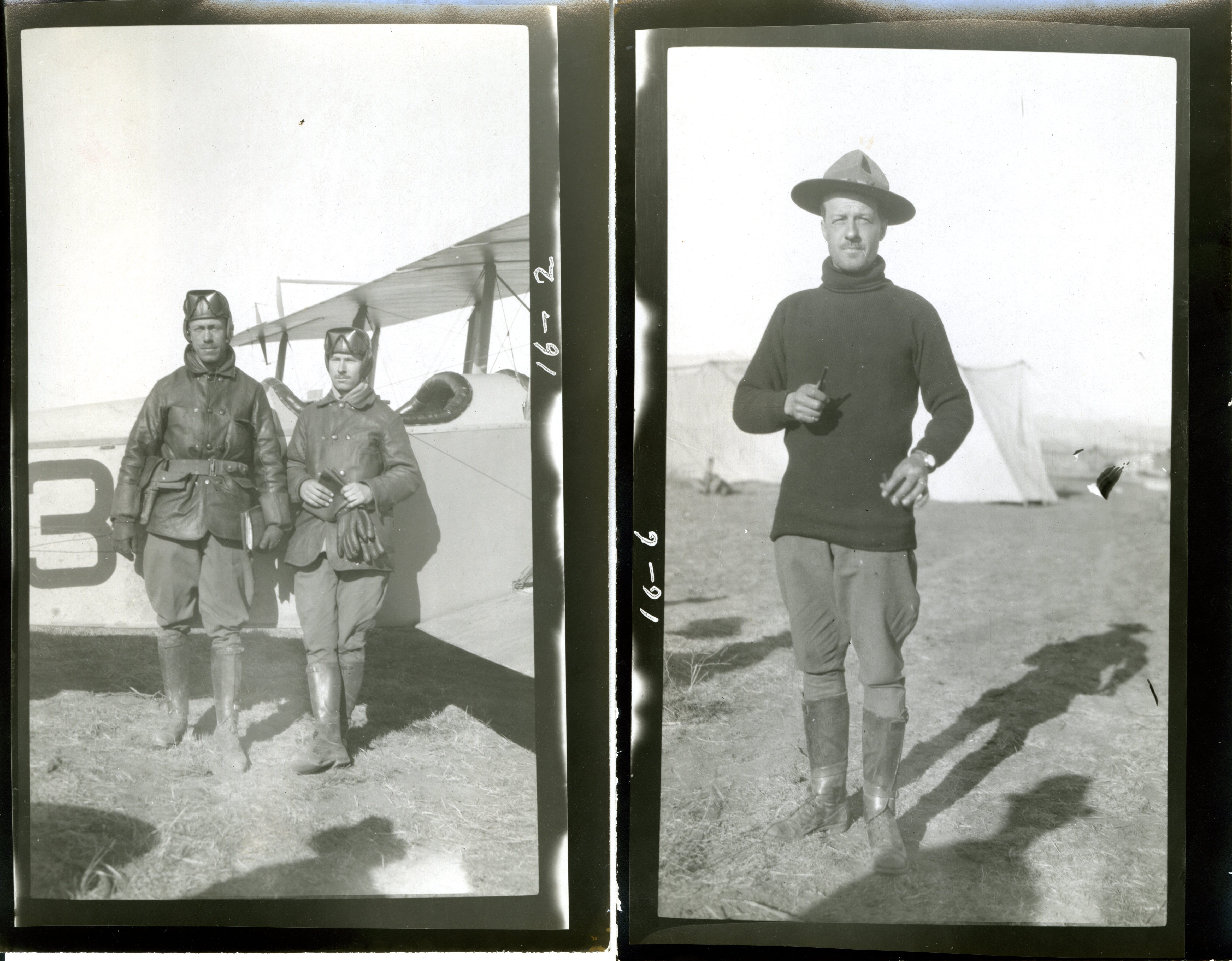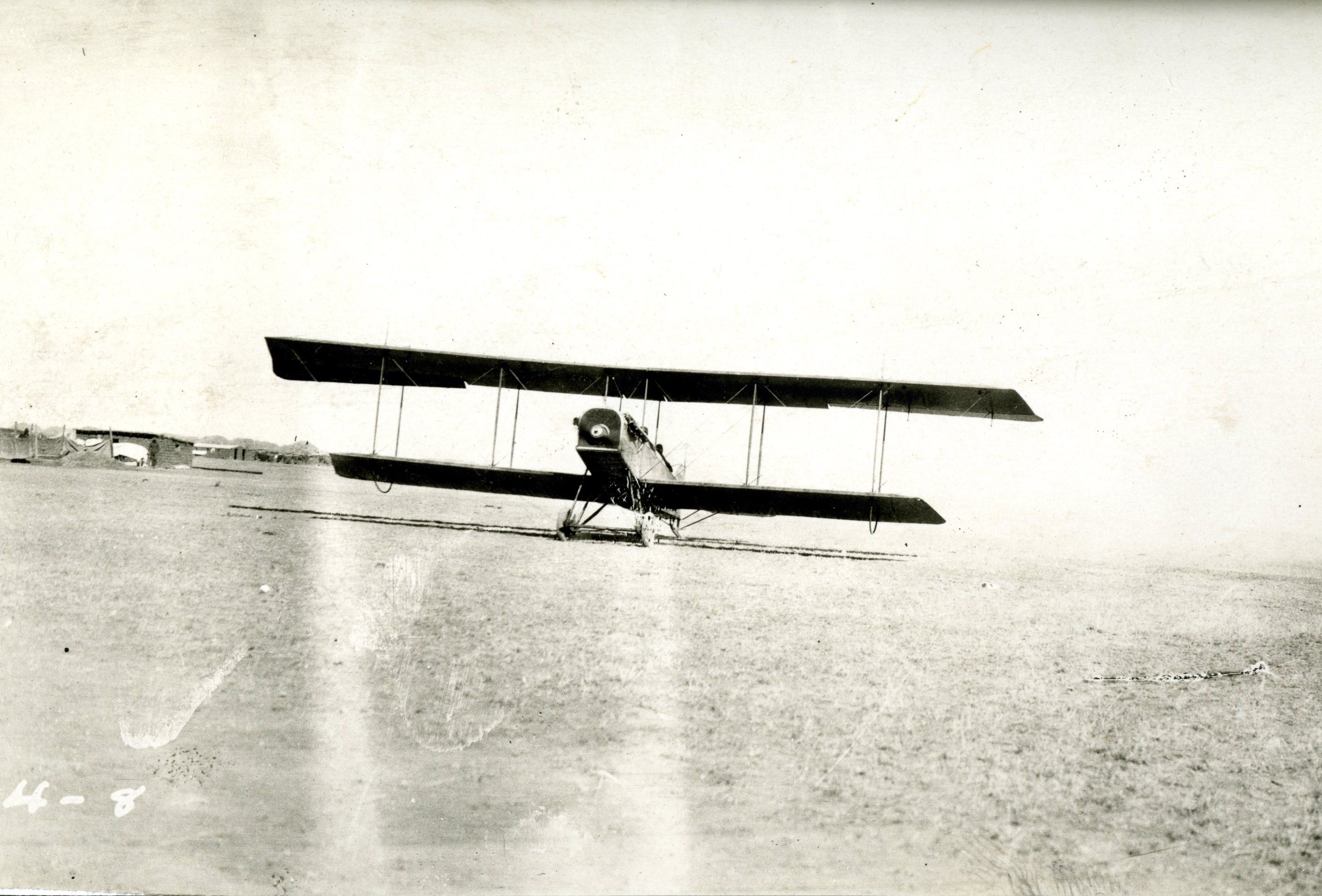The U.S. Army purchased its first airplane in 1909. In early 1910, 1st Lt. Benjamin D. Foulois was assigned to take the plane to Fort Sam Houston, Texas, to experiment with it and learn to fly. Armed with the military's first appropriation of $125,000, the Signal Corps bought several more planes and participated in maneuvers for the first time.
In February 1913, the political troubles in Mexico prompted sending a group of Soldiers to the U.S.-Mexico border. This group was named the 1st Aero Squadron (Provisional). When their services on the border were no longer needed, they relocated to San Diego, Calif., and in December 1913, dropped the "Provisional" from their name. In 1914, Foulois was promoted to captain and assumed command of the 1st Aero Squadron, the first official airplane unit in the U.S. Army.
On March 9, 1916, Francisco "Pancho" Villa led a group of almost 500 men to raid the small town of Columbus, N.M. After several hours of fighting, the Villistas had enough and returned to Mexico. This foray into American soil prompted President Wilson to revoke his "non-retaliation" policy and he assembled a large Punitive Expedition under Gen. John J. Pershing to chase Villa.
Part of the force sent to Columbus was Capt. Foulois' 1st Aero Squadron. In the intervening three years, Foulois had struggled to standardize the equipment and create a fully mobile unit. The squadron arrived in Columbus on March 15, with all eight of its planes in pieces for easier transport. These planes were JN-3's, nicknamed "Jennies" and were suitable for flying distances of 100 miles or less. Foulios and his planes were not in New Mexico for a combat mission, but for communications and observation.
The first sortie was to fly 20 miles into Mexico to look for rebels. Foulois reported that there were no rebels seen, which allowed Pershing to focus more on logistics and less on perimeter defense. Pershing promptly commandeered the aero squadron's trucks for troop and food transport. On March 19, Pershing ordered the 1st Aero Squadron to his headquarters in Casas Grandes, Mexico, over 100 miles south of Columbus. Foulois decided to leave in the evening, despite the fact that only two of the eight pilots had any night flying experience.
After a harrowing night, when two planes went missing and one crashed, the remaining five planes were put to work on March 20th. The first mission was to reconnoiter along the Mexican Northwest Railroad in the Sierra Madre Mountains. Foulois and his observer went on the first mission but soon ran into trouble as the Jennies were under-powered and, due to heavy crosswinds and high altitude, could not make it over the foothills.
March 21 proved to be a better day. Pershing ordered a plane to find and reconnoiter with Col. Erwin and the 7th Cavalry. Foulois found the column and discovered that they were out of rations and forage and that their radio was inoperable. Several 1st Aero Squadron trucks were sent with supplies.
March 22 witnessed another interesting chain of events for the squadron. One plane was sent to find Col. Dodd's cavalry column, which was 60 miles away. The column was found successfully, and important information and general communications were returned to Colonia DublAfA!n, which was now headquarters for Pershing. Foulois again attempted to establish communications with troops along the Northwest Railroad. Troops were spotted near the Cumbre Pass Tunnel, but weather and wind conditions were not suitable for a landing, and the communications were not important enough to risk lives and aircraft. Shortly after this mission Foulois wrote to Pershing that newer, more powerful aircraft were needed:
"The present service in northern Mexico, where all operations of aeroplanes must commence at not less than 5,000 feet altitude on the ground, and operate above mountain tops 10,000 feet above sea level, makes it imperative that all aeroplanes sent out for this service be equipped with very powerful engines, and that these aeroplanes must be capable of climbing to a height of at least 18,000 feet with a pilot, observer, and four hours's fuel. . . . All of the several types of aeroplanes asked for in this memorandum herewith lay claim to high climbing and weight carrying ability."
March 23 and 24 were wasted flying days due to a sandstorm and then a blizzard. Foulois did send out several of his trucks to scavenge for parts. The 25th was clear, and Foulois attempted to find Pershing in El Valle, but by the time he got there Pershing had already returned to Colonia DublAfA!n. Several planes had been damaged beyond the squadron's ability to fix in the field. On the 28th the squadron flew several reconnaissance missions and began moving Pershing's headquarters to El Valle. Finally, by March 30, the last of the 1st Aero Squadron's men and equipment made it to Colonia DublAfA!n. On March 31, Foulois and Pershing agreed on using the airplanes as means of communication with advanced troops after radio communications were established between the major outposts. The 1st Aero Squadron continued to help Pershing throughout the campaign.
This was the first use of airplanes in the U.S. Army under combat conditions. The U.S. Army had neglected the air services branch, but the Punitive Expedition proved that they had a use. The declaration of war against Germany a year later would force the Army into creating the Army Air Service (still within the Signal Corps throughout the First World War) and bring the pioneers, like Foulois and Billy Mitchell, into the light. Mitchell is often considered the founder of the modern Air Force, but Foulois was the first leader. Foulois went on to become a major general and chief of the Army Air Corps by December, 1931.
ABOUT THIS STORY: Many of the sources presented in this article are among 400,000 books, 1.7 million photos and 12.5 million manuscripts available for study through the U.S. Army Military History Institute (MHI). The artifacts shown are among nearly 50,000 items of the Army Heritage Museum (AHM) collections. MHI and AHM are part of the: Army Heritage and Education Center, 950 Soldiers Drive, Carlisle, PA, 17013-5021.
Related Links:
A Working Bibliography of MHI Sources: Air US 1920-1941
A Working Bibliography of MHI Sources: Mexican Punitive Expedition














Social Sharing